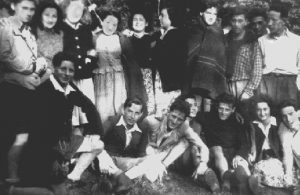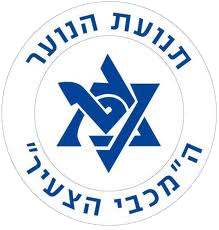׳Maccabi Hatzair׳
Youth movement ideologically similar to Mapai. In Hungary this movement operated mainly among Jewish high school students, who went on to study at universities. In 1938, it became a countrywide movement and a year later a national executive administration was elected. An initial group of halutzim even went to Eretz Israel as part of the illegal Aliyah activities. The movement’s leadership included members who arrived in Hungary as Slovakian refugees. Maccabi Hatzair played an active role in rescue operations and resistance to the fascist regime. After WWII, the movement was involved in the rehabilitation of the survivors, preparing young people for Aliyah and bringing them to Israel. For these efforts, the movement developed training programs and extensive educational programs in its chapters and in refugee children’s homes. The halutzim who made Aliyah founded the movement’s kibbutz, Tze’elim, but after a short time – following a decision by the movement – the kibbutz members joined the rehabilitation efforts in Kfar Hahoresh, Kibbutz Matzuva and other kibbutzim.

׳Ihud Mapai׳
Mapai – Mifleget Poalei Eretz Yisrael (Workers Party of the Land of Israel) – was founded in 1930, in Palestine, as a union of two parties, Hapoel Hatzair and Ahdut Ha’Avodah. The word Ihud (unification) was added to the party’s name in its chapters abroad. The party’s ideology was social Zionist, and its main figure and leader in 1933 was Dr. Bela Denes, a medical doctor. He was one of the main activists in the Jewish community in Budapest and a member of the Zionist Union executive. Other key activists included Hillel Danzig, a journalist who visited Eretz Israel in 1939, Katalin Kiss, Weiler Ferenc and Dr. Ilona Beneschofsky. The party was active in Hungary until 1949.

